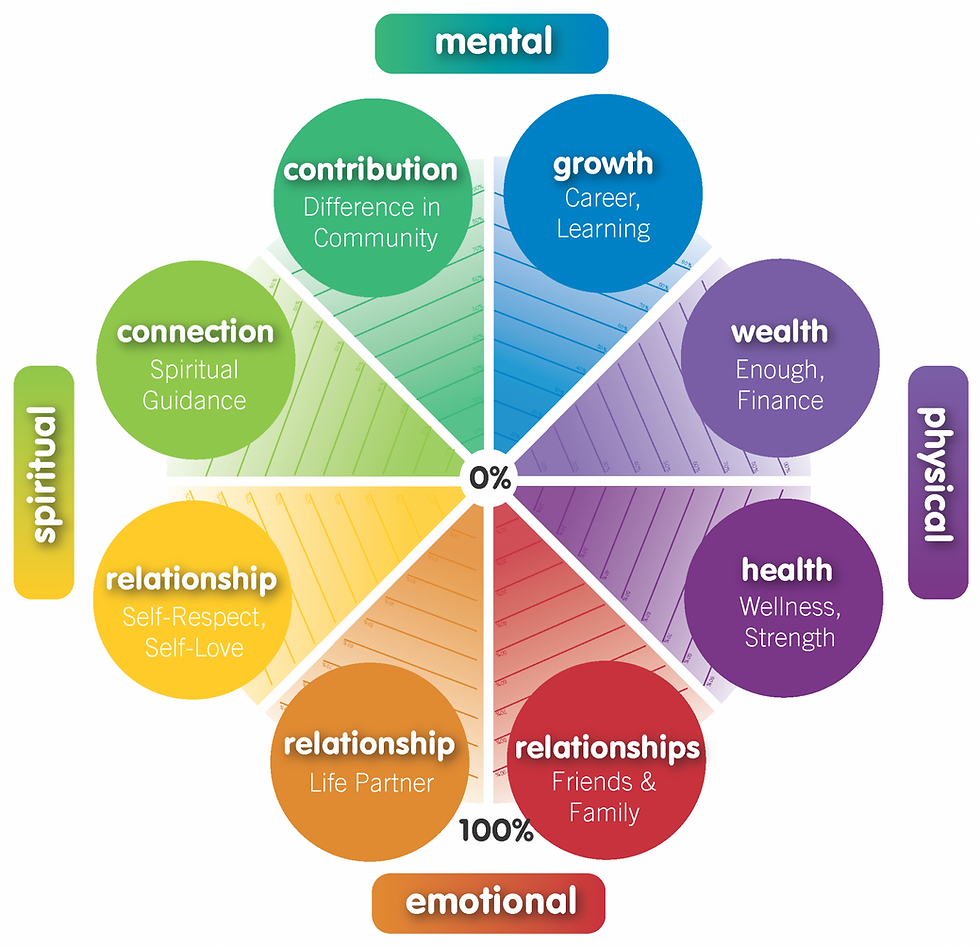10 Coaching Metaphors That Unlock Awareness — Backed by Neuroscience and Client Stories
- Geraldine Gauthier
- Sep 25
- 6 min read
“The world is shaped by the stories we tell ourselves.” As a Master Certified Coach, I’ve learned that meaningful change isn’t about giving advice—it’s about helping clients see their own stories. Over and over I watched clients get stuck in patterns because they couldn’t see what was really happening. I started playing with metaphors. One session in particular stands out: a senior executive told me he felt as if he were carrying the world on his shoulders. As he spoke I invited him to describe that world. Was it heavy? Rough? Smooth? He closed his eyes and, for the first time, could feel the weight he had been putting on himself. That image became an anchor for the changes he later made.

As a Master Certified Coach (MCC), metaphors are central to my work. People rarely arrive with neat, linear explanations of their challenges. They arrive with sensations, tensions and images. Metaphors provide a bridge from the abstract to the tangible. In fact, when I train coaches on how to effectively use coaching tools, metaphors become one of the most versatile ones - because they invite clients to feel their world instead of just talk about it.
Why Metaphors Work - A Neuroscience View
Neuroscience backs up this intuition: studies show that when people hear a metaphor such as “she had a rough day”, their brain activates the same tactile regions involved in actually feeling rough surfaces; hearing action verbs used metaphorically, such as “grasp a concept,” engages sensory‑motor regions much like a literal action. We use metaphors so naturally — researchers estimate we employ one roughly every 20 words that meeting clients in this language feels like speaking their mother tongue.
Every image a client shares is a doorway into their inner world.
Why does this matter for coaching? Because change happens when head, heart and body align. Metaphors invite clients to experience their patterns rather than just analyse them.
Besides, metaphors offer safety: talking about a stormy sky can feel less threatening than admitting, “I’m overwhelmed.” They give clients a safe stage to rehearse their truth.
Metaphors build our client's narrative.
Every metaphor is a map. When clients describe their jungle, their tunnel or their boat, they reveal the terrain of their inner world and begin to shape the narrative of their experience.
Below are ten metaphors I frequently encounter in coaching, along with examples and tips on how to use them.
Ten Metaphors That Unlock Awareness
1. The Boat (or Sailboat)
A client once said, “My life feels like a boat taking on water.”
I asked, “Where is your boat right now: harbour, open sea, or storm?”
He whispered, “In a storm, and the hull is leaking.” Together we patched the “holes”: his unspoken fears - before he could raise the sail and catch the wind of motivation.
Tip: Boats reveal how your client sees support and control. Are they steering? Do they have a crew? Is the weather calm or chaotic?
Psychologist Scott Barry Kaufman offers the sailboat metaphor as as a reflective tool for yourself or your clients.
2. The Weather
A coachee came in saying, “It feels like an emotional downpour today.”
I asked, “What’s your shelter?”
She realised that journaling was her umbrella. Later, when another described “weeks of gray skies,” we explored her “sun rays” small rituals that lifted her mood. Both left seeing emotions as weather: temporary, shifting, and survivable.
3. The Iceberg
An executive said, “This conflict is just the tip of the iceberg.”
Above the surface: raised voices in meetings. Below: his fear of losing authority. Once he named the submerged part, he stopped micromanaging and started building trust. The iceberg gave him a map of what really needed attention.
Tip: Ask what lies beneath. Icebergs encourage clients to explore hidden beliefs driving visible behaviour.

4. The Mountain
One client saw her goal - writing a book - as Everest. “Too high,” she sighed.
I asked, “What’s basecamp one?”
She realised it was drafting one chapter. Reframing the climb into sub-peaks gave her momentum. The mountain stopped being impossible and became a series of achievable ascents.
Tip: Mountains turn vague ambitions into concrete stages, building momentum and celebrating progress.
5. The Door
A manager once described standing before a heavy door: “I want to open it, but I’m scared of what’s on the other side.”
We explored the handle, the weight, the unknown. In the end she said, “Even if I don’t know the full room, I can open it just a crack.” That small step turned hesitation into movement.
Tip: Doors invite curiosity. What if the door isn’t locked? Could there be light or support on the other side?
6. The Room
A client described feeling “stuck in a small, dark room.”
I asked about the walls, the windows, the furniture. She suddenly laughed: “There’s a window - I just never opened it.”Imagining pulling the curtains shifted her from trapped to resourceful. The metaphor helped her see possibilities she hadn’t noticed.
Tip: Rooms represent mental spaces. Ask about size, light, contents. Are there multiple rooms? A door to exit.
7. The Tunnel
A leader under pressure said, “I’m deep in a tunnel.”
I asked, “Do you see light ahead?”
He shook his head, then realised he wasn’t alone - he had colleagues walking beside him. That recognition shifted his perspective: the tunnel was still there, but now it wasn’t endless or lonely.
Tip: Tunnels can symbolise focus or isolation. Exploring who else is there can reveal support networks.

8. The House (Builder vs. Architect)
One client was constantly building projects but burning out. I asked, “Are you the builder or the architect right now?”
She realised she was laying bricks without ever checking the blueprint. Pausing to sketch her values and vision gave her the structure she needed. Suddenly, her building made sense again.
9. The Forest
A client said, “I’m lost in the forest.”
We explored the trees, the sounds, the paths. She noticed she had a compass in her backpack - her network of mentors. That shifted her from panic to problem-solving. The forest was still dense, but now she had tools to navigate.

10. The Jungle
Another described her workplace as a jungle: “Snakes and gorillas everywhere.”
I asked, “Who else is in your jungle?”
She paused, then added, “Actually, I do have allies - birds that guide me.” Seeing the organisation as an ecosystem - not just predators - gave her a new way to survive and even thrive.
Tip: Jungles capture complexity. Invite clients to see predators and allies. What resources are hidden among the vines?
How to Work With Metaphors as a Coach
Notice them. Clients often drop metaphors unconsciously: “I feel like I’m drowning,” “It’s a jungle out there,” “I hit a wall.” Catch these phrases and bring them to awareness.
Stay curious. Don’t translate too quickly. Ask open questions about the metaphor’s sensory qualities (sights, sounds, textures), emotional tone and hidden elements. Neuroscience suggests that exploring these sensory details activates embodied understanding.
Invite exploration. Encourage clients to walk around their metaphor. If it’s a house, what’s in each room? If it’s a forest, are they lost or exploring? If it’s a boat, who else is on board?
Avoid imposing your own metaphor. Every brain has unique associations. Imposing a metaphor risks misalignment. If a metaphor seems limiting, offer an alternative with permission: “Would you like to explore another image that might offer new possibilities?”
Anchor the shift. When a metaphor evolves (“the storm is clearing,” “I see light”), link it to action: What will you do differently now? This integrates insight with behaviour.
Offer a metaphor (carefully). Sometimes clients are stuck in story‑less data. Gently offer a metaphor—“Would it help to think of this as climbing a mountain?”—and check if it resonates. If it doesn’t, let it go.
Metaphors open doors the conscious mind keeps shut.
Every metaphor is a shortcut to the subconscious.
They bridge the abstract and the concrete, inviting clients to play, imagine and discover what linear problem‑solving cannot reach. I’ve lost count of the times a client has left a session saying, “I’ll never forget that image.”
Clients may forget my questions, but they never forget the images.
That’s the quiet, profound work of metaphor. As neuroscience shows, these images engage sensory areas of the brain and light up our motor cortex. They connect head, heart and body: an essential integration for lasting change. Growth starts when we notice the story we’re standing in.
In fact, in many of our blog posts - whether it's Somatic Coaching: What Is It or Coaching 101: The Essential Guide - we point back to the power of metaphor as a foundational entry point to deeper awareness.
At the MCC level, metaphors are not optional; they are at the heart of the transformation.
If you’re a coach, leader, or simply someone curious about growth, I invite you to start listening for the metaphors in your own life. Which ones are holding you back? Which ones could set you free?
I'm Geraldine Gauthier, MCC. I share insights on coaching and personal growth to help you grow as a coach and a leader. Subscribe to my newsletter for regular inspiration and practical tools you can apply right away.
At GoMasterCoach we specialise in training coaches to harness tools like these - combining neuroscience, practice, and community to help you grow as a coach and a leader.
Ready to deepen your coaching skills? Explore our ICF-accredited programs and digital toolbox!





Comments